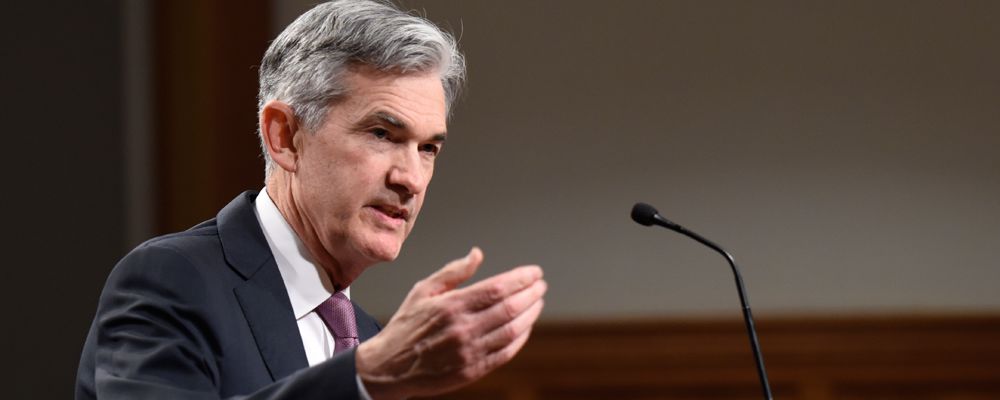Markets are suffering from altitude sickness.
- Monday, June 15, 2020
 The steady upward march of global stock markets was brought to a halt last week with the threat of a second wave of coronavirus and a bleak economic outlook hitting sentiment. The past ten weeks has seen a remarkable rebound in equity and bond markets due to exceptionally low interest rates and massive central bank stimulus packages. The level of bounce back has raised concerns that the stock market was losing touch with the actual reality of a pandemic scared economy. The rally is sensitive and very dependent upon liquidity.
The steady upward march of global stock markets was brought to a halt last week with the threat of a second wave of coronavirus and a bleak economic outlook hitting sentiment. The past ten weeks has seen a remarkable rebound in equity and bond markets due to exceptionally low interest rates and massive central bank stimulus packages. The level of bounce back has raised concerns that the stock market was losing touch with the actual reality of a pandemic scared economy. The rally is sensitive and very dependent upon liquidity.
The FTSE 100 stood at a low point of 4993 on 23rd March, rose 29.6% to 6472 on 8th June, but fell -5.6% to 6105 by last Friday 12th June. The S&P 500, likewise rose 44% since the floor of the market but lost -5.9% last week.
These falls came after Federal Reserve Chair Jerome Powell presented the Fed’s Open Markets Committee (FOMC) outlook for the US economy. The FOMC is responsible for setting US interest rates. On Wednesday the committee voted to keep US interest rates at the historical low of 0-0.25% and stated that rates will stay at near zero until the end of 2022 as they do not expect US GDP to fully recover to pre-coronavirus levels until that time. This is a more pessimistic outlook than previous statements.
The FOMC predicted a -6.5% decline in US GDP and a 9.3% unemployment rate by the end of this year. The current unemployment rate is down from 14.75% in April to 13.3% in May after 2.5 million people were re-hired while another 1.5 million lost their jobs. Mr Powell was concerned that of the 22 million Americans currently claiming unemployment benefits many may not find work. The FOMC confirmed that it would continue with its QE programme of purchasing US$80bn per month of US Treasury bonds and US$40bn per month of corporate credit and mortgage backed securities. This level of support has been a decisive factor in the US stock market recovery. The FOMC have made it clear that they intend to continue their QE programme at least at current purchasing levels. This led commentators to speculate that the Fed will do more if needed.
In Europe, the ECB has doubled its own QE bond purchasing programme to €1.35tn. ECB Chair Christine Lagarde defied the German Constitutional Court ruling and pushed ahead with a massive increase in eurozone support measures. The ECB felt that it was needed as the recent European Commission €750bn pandemic recovery funding was not seen as sufficient. €400bn of this package will not be available until March 2021.
Markets have taken the reduction in lockdown restrictions as a sign that the economy is starting to re-establish itself. However, with easing has come reports of a new wave of Covid-19 infections in Texas, California, Arizona and South Carolina. The total cases per million of population in these states are similar to the levels seen in Italy and France which were hit hard by the pandemic. Markets are now wary of both infection growth rates and actual numbers of infections. Arizona was worst hit with a 4.6% rise in infections last week.
Imperial College warned in late May that the US was re-opening too early as 24 states had R rates above 1. New infection levels are now growing as was predicted.
The question now is what will the US government do about these new infections? So far it looks like Washington is unlikely to reintroduce any lockdown measures. US Secretary of the Treasury, Steve Mnuchin has stated ‘We cannot shut down the economy again. If we shut down the economy, we will cause more damage’
The prevailing view in Washington is not shared by Beijing. One area of Beijing has been put under strict lockdown after the city recorded its first coronavirus case for 50 days. 45 people who visited a wholesale market tested positive resulting in 10,000 market staff being tested and 11 local neighbourhoods locked down.
Worries of a double dip pandemic have combined with a fear that the current and massive global monetary and fiscal stimulus may not be sufficient to counter the full shock of this crisis. The market rally has been built on a one wave scenario and any thought that a second wave may develop strongly has just spooked markets.
Despite these recent new outbreaks, the general impact of coronavirus is bottoming out and many countries are moving forward with an easing of restrictions in order to boost economic recovery. Professional rugby re-started in New Zealand this weekend and Premier League football starts again on Wednesday but in empty stadiums.
The current levels of liquidity and potential future increases to liquidity are driving down yields in US Treasury’s and UK gilts making the returns on these ‘safe haven assets’ historically low. The added risk of inflation based upon excess liquidity has led us to pull in our duration risk on some of the longer dated gilt and corporate credit holdings than we had previously proposed. The threat of a second wave, recession and additional liquidity measures have been factored into our new Edition 33 portfolios by improving downside risk factors.

Chris Davies
Chartered Financial AdviserChris is a Chartered Independent Financial Adviser and leads the investment team.
About Estate Capital
Financial Services
Our Contacts
7 Uplands Crescent,
Swansea, South Wales,
SA2 0PA.
Tel: 01792 477763
